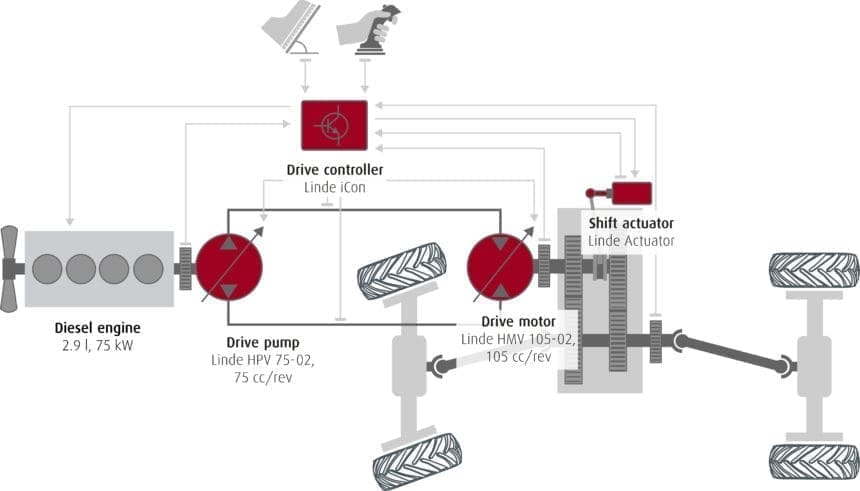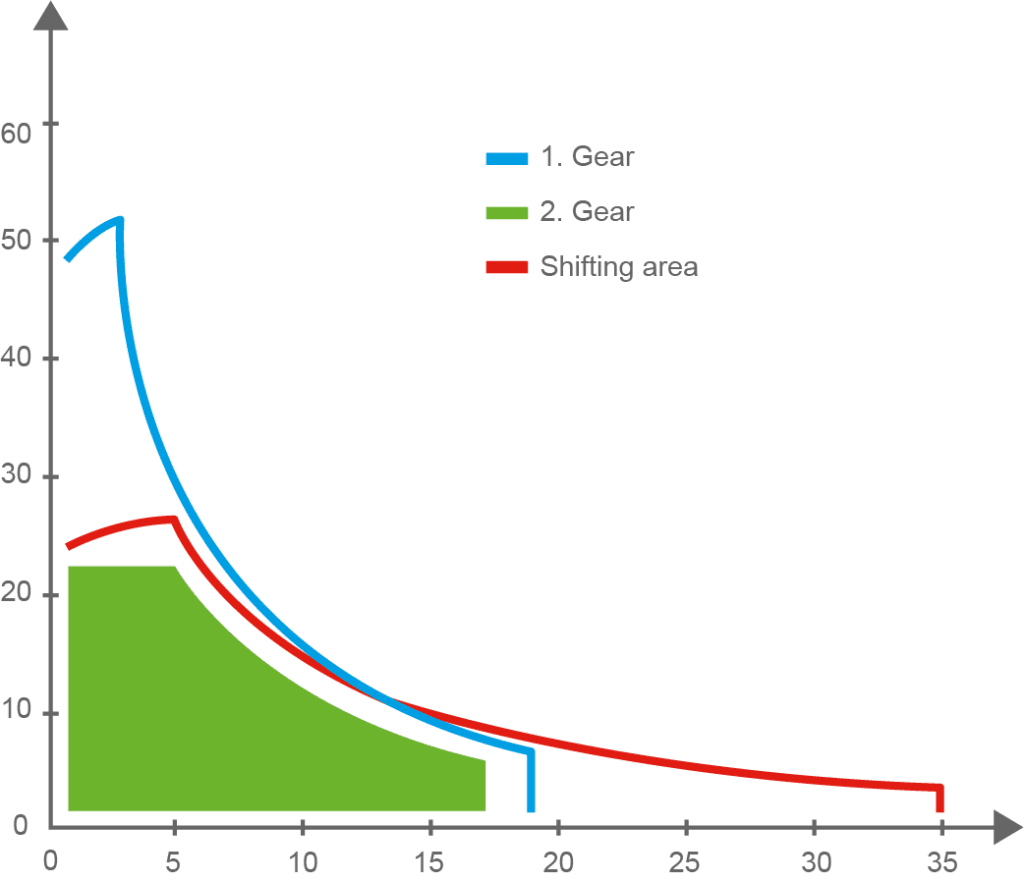Hydrostatic Drive. Shift in Motion.
Shift in Motion enables shifting procedures in a moving machine, equipped with a manual transmission that is intended to be shifted at standstill by electro-hydraulically synchronising the drivetrain. This system is particularly suitable for vehicles that often change between transport and operation, i.e. vehicles that require both high tractive effort and a high top speed above 25 kilometres per hour. The shifting procedure is load-free thanks to electro-hydraulically synchronised gears and the ability to adjust the drive component’s speed and torque. Thus there is no need for multi-disc clutches and mechanical synchronisation using synchronizer rings and moreover there’s less pinion engagement. This makes the shifting procedures wear-free and also increases the transmission’s efficiency. The shifting process can be initiated by driver request or automatically according to customer specifications. The criteria for its permissibility can be adapted to the specific vehicle and situation. The drive train is relieved by adjusting the pump and engine and the transmission is disengaged in neutral position. The hydraulic transmission ratio is then adapted to the new gear, afterwards the desired gear is engaged and the normal driving program is continued. The entire process takes only about half a second. Due to the quick and uncomplicated gear change, it is also worthwhile to design the transport gear for a higher than the desired final speed. The actual top speed of the vehicle is thus achieved with reduced hydraulic motor and diesel engine speed. By operating the units at the more favorable operating point, both fuel consumption and noise emissions are reduced. 
Design characteristics
- Hydrostatically controlled synchronization of manual gear boxes shifted at standstill
- Full utilization of the kinetic energy while changing between transport to operation (and vice versa)
- Compared to conventional drives, Shift in Motion includes only two additional components
Advantages
- Automated and jerkless gear changes (<0.7 sec.) without standstill and the need of expensive synchromesh gear boxes
- Considerable reduction of fuel consumption and noise emissions
- Minimum space requirement
